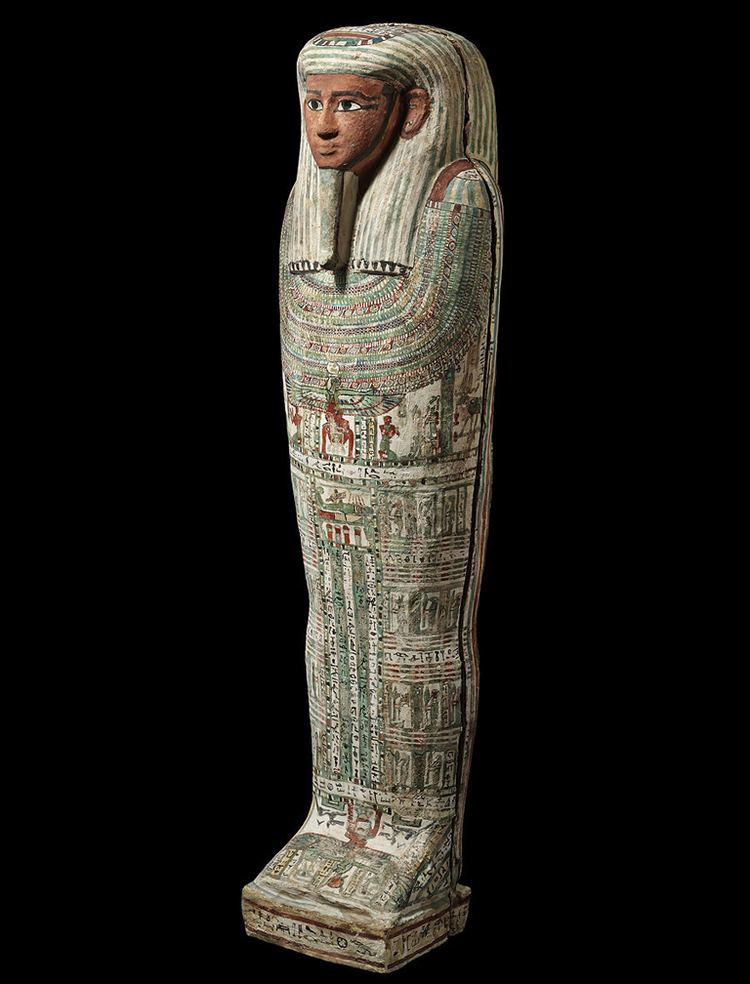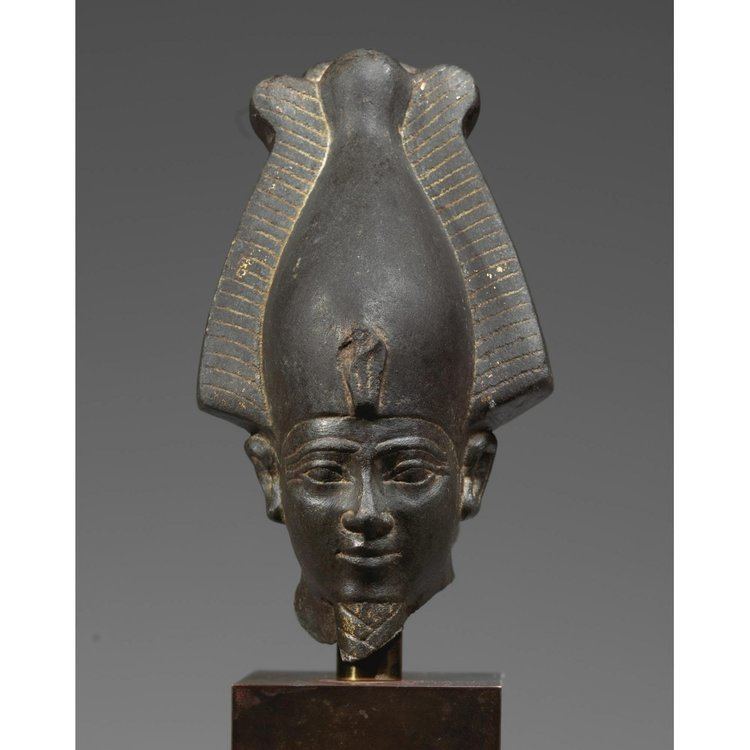Mother Queen Istemabet Children Necho II, Nitocris I Father Necho I Died 610 BC Grandparents Tefnakht II | Role King Grandchildren Psamtik II Name Psamtik I Parents Necho I, Istemabet | |
 | ||
Reign 664 – 610 BCE (26th dynasty) Similar People Necho II, Psamtik III, Amasis II, Apries, Necho I | ||
Great grandchildren Apries, Ankhnesneferibre | ||
Psamtik i colossus torso emerges from underground water in cairo
Wahibre Psamtik I, known by the Greeks as Psammeticus or Psammetichus (Latinization of Ancient Greek: Ψαμμήτιχος, Psammḗtikhos), who ruled 664–610 BC, was the first of three kings of that name of the Saite, or Twenty-sixth Dynasty of Egypt. Historical references for what the Greeks referred to as the Dodecarchy, a loose confederation of twelve Egyptian territories, based on the traditional nomes, and the rise of Psamtik I in power, establishing the Saitic Dynasty, are recorded in Herodotus's Histories, Book II: 151–157. From cuneiform texts, it was discovered that twenty local princelings were appointed by Esarhaddon and confirmed by Ashurbanipal to govern Egypt.
Contents
- Psamtik i colossus torso emerges from underground water in cairo
- How a Pharaohs Bold Plans Rewrote the Course of History
- Military campaigns
- Discovering the origin of language
- Wives
- Statue discovery
- References

Necho I, the father of Psamtik by his queen Istemabet, was the chief of these kinglets, but they seem to have been quite unable to lead the Egyptians under the hated Assyrians against the more sympathetic Nubians. The labyrinth built by Amenemhat III of the Twelfth Dynasty of Egypt is ascribed by Herodotus to the Dodecarchy, which must represent this combination of rulers.

Necho I died in 664 BC when the Kushite king Tantamani tried unsuccessfully to seize control of lower Egypt from the Assyrian Empire. After his father's death, Psamtik both united all of Egypt and freed it from Assyrian control within the first ten years of his reign.
How a Pharaoh's Bold Plans Rewrote the Course of History

Military campaigns

Psamtik reunified Egypt in his ninth regnal year when he dispatched a powerful naval fleet in March 656 BC to Thebes and compelled the existing God's Wife of Amun at Thebes, Shepenupet II, to adopt his daughter Nitocris I as her heiress in the so-called Adoption Stela. Psamtik's victory destroyed the last vestiges of the Nubian Twenty-fifth Dynasty's control over Upper Egypt under Tantamani since Thebes now accepted his authority. Nitocris would hold her office for 70 years from 656 BC until her death in 585 BC. Thereafter, Psamtik campaigned vigorously against those local princes who opposed his reunification of Egypt. One of his victories over certain Libyan marauders is mentioned in a Year 10 and Year 11 stela from the Dakhla Oasis. Psamtik won Egypt's independence from the Assyrian Empire and restored Egypt's prosperity during his 54-year reign. The pharaoh proceeded to establish close relations with archaic Greece and also encouraged many Greek settlers to establish colonies in Egypt and serve in the Egyptian army. In particular, he settled some Greeks at Tahpanhes (Daphnae).
Discovering the origin of language

The Greek historian Herodotus conveyed an anecdote about Psamtik in the second volume of his Histories (2.2). During his travel to Egypt, Herodotus heard that Psammetichus ("Psamṯik") sought to discover the origin of language by conducting an experiment with two children. Allegedly he gave two newborn babies to a shepherd, with the instructions that no one should speak to them, but that the shepherd should feed and care for them while listening to determine their first words. The hypothesis was that the first word would be uttered in the root language of all people. When one of the children cried "βεκός" (bekós) with outstretched arms, the shepherd concluded that the word was Phrygian because that was the sound of the Phrygian word for "bread". Thus, they concluded that the Phrygians were an older people than the Egyptians, and that Phrygian was the original language of men. There are no other extant sources to verify this story.
Wives
Psamtik's chief wife was Mehytenweskhet, the daughter of Harsiese, the vizier of the North and High Priests of Atum at Heliopolis. Psamtik and Mehytenweskhet were the parents of Necho II, Merneith, and the Divine Adoratrice Nitocris I.
Psamtik's father-in-law—the aforementioned Harsiese—was married three times: to Sheta, with whom he had a daughter named Naneferheres, to Tanini and, finally, to an unknown woman, by whom he had both Djedkare, the vizier of the South and Mehytenweskhet. Harsiese was the son of vizier Harkhebi, and was related to two other Harsieses, both viziers, who were a part of the family of the famous Mayor of Thebes Montuemhat.
Statue discovery
On 9 March 2017, Egyptian and German archaeologists discovered a colossal statue about 7.9 metres (26 ft) in height at the Heliopolis site in Cairo. Made of quartzite, the statue was found in a fragmentary state, with the bust, the lower part of the head and the crown submerged in groundwater.
It is suggested to be of Psamtik I due to engravings found that mentioned one of the pharaoh's names on the base of the statue.
A spokesperson at the time commented that "If it does belong to this king, then it is the largest statue of the Late Period that was ever discovered in Egypt." The head and torso are expected to be moved to the Grand Egyptian Museum.
